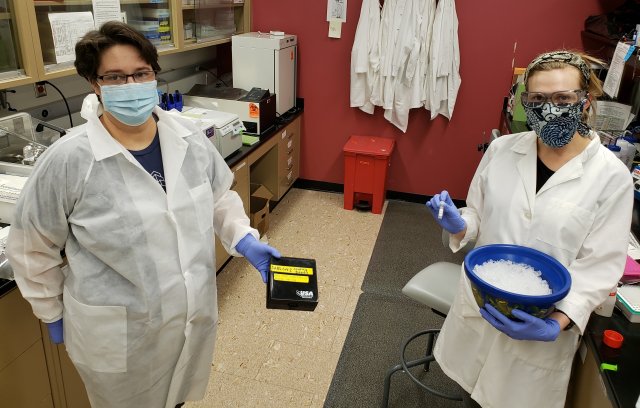EPA Researchers Recruiting Participants for Study to Develop SARS-CoV-2 Salivary Antibody Assay
Published July 22, 2020

EPA researchers are adapting a salivary antibody test that has been previously used as a test for potentially waterborne pathogens, for example norovirus, to test for antibodies to SARS-CoV-2, the virus that causes COVID-19. An antibody test looks for the presence of antibodies, which are small proteins created by the immune system in the process of fighting off a disease. These tests give researchers the ability to identify those who may have been infected with the virus and those who have not, which provides critical information for the public health community as they continue to track the spread of the virus.
Antibodies can be specific to one kind of disease or a disease-type and can provide a window into a person’s infection history. The ability to detect antibodies for SARS-CoV-2 can reveal whether a patient has had COVID-19, even if they were never diagnosed or had symptoms.
Traditionally, most methods to measure antibodies have relied on serological testing. These can be expensive and invasive approaches requiring that blood samples be collected and tested for antibodies against the pathogens in question. Collecting saliva samples is simple and painless, even for young children. The collection device consists of a simple sponge attached to a handle. Collection involves rubbing the gums gently for about 1 minute until the sponge is saturated and returned to the collection tube. The approach EPA researchers are developing uses a multiplex technique, which can greatly reduce analysis costs and the necessary volume and of saliva.

“If we can successfully develop a salivary assay to detect COVID-19 antibodies, it has the potential to enable low-cost population monitoring, including street and mail sampling of adults and children, and even self-collection at home,” states Tim Wade, PhD, EPA’s lead scientist for the assay development. “We hope this approach will allow for widespread surveys in communities to better understand the asymptomatic rate of infection, track the immune status, identify risk factors for infection and severe illness following infection and find disproportionately affected subpopulations.”
“We will compare the performance of our saliva antibody assay to the serum antibody assay to see whether it performs as well, worse, or better than a serum-based antibody assay. To accomplish this, we will need saliva and serum samples from recently infected individuals as well as samples from people who have tested negative for the virus,” adds Wade.
EPA researchers are currently recruiting people to provide saliva samples for this research. They are recruiting up to 300 participants. Interested individuals must be at least 18 years of age, able to communicate in English, a resident of the continental United States and have been diagnosed with COVID-19 infection within the last 15 and up to 60 days. Participants will complete a short questionnaire; they will then be sent materials to collect their own saliva sample and will be able to return the sample using a pre-paid shipping box.
The salivary assay is being developed for research purposes in order to better understand the rate of COVID-19 infection and its population dynamics. The assay is not a clinical diagnostics tool. After development, the assay will be made available to public health professionals, which will allow communities to better understand who is most at-risk for infection, who is at risk for more severe disease following infection, and what preventative measure can be taken to reduce the rate of infection.
For more information, please visit:
https://www.epa.gov/healthresearch/research-covid-19-environment
